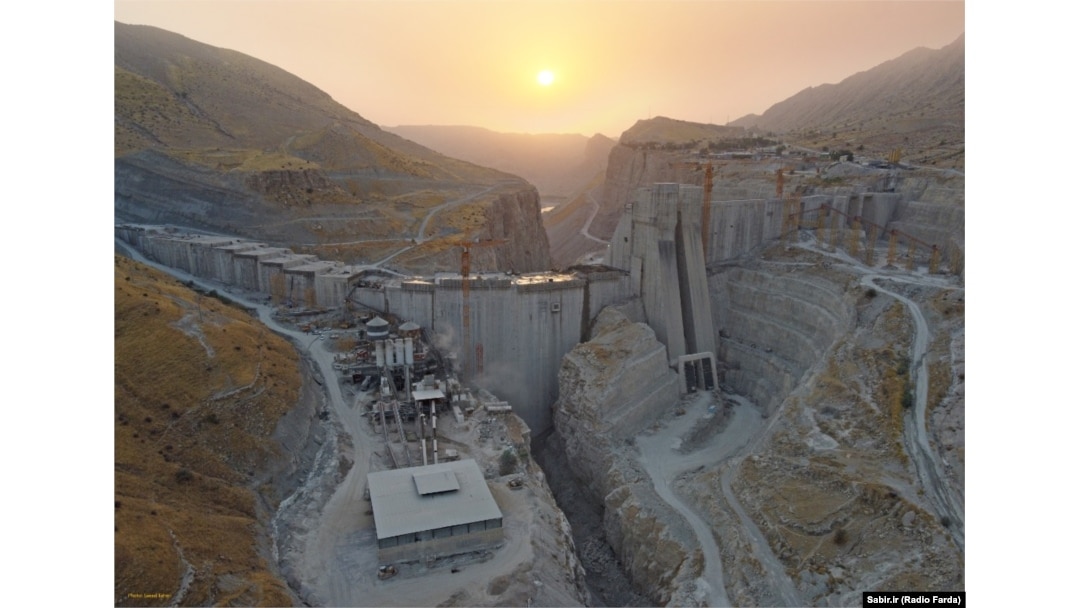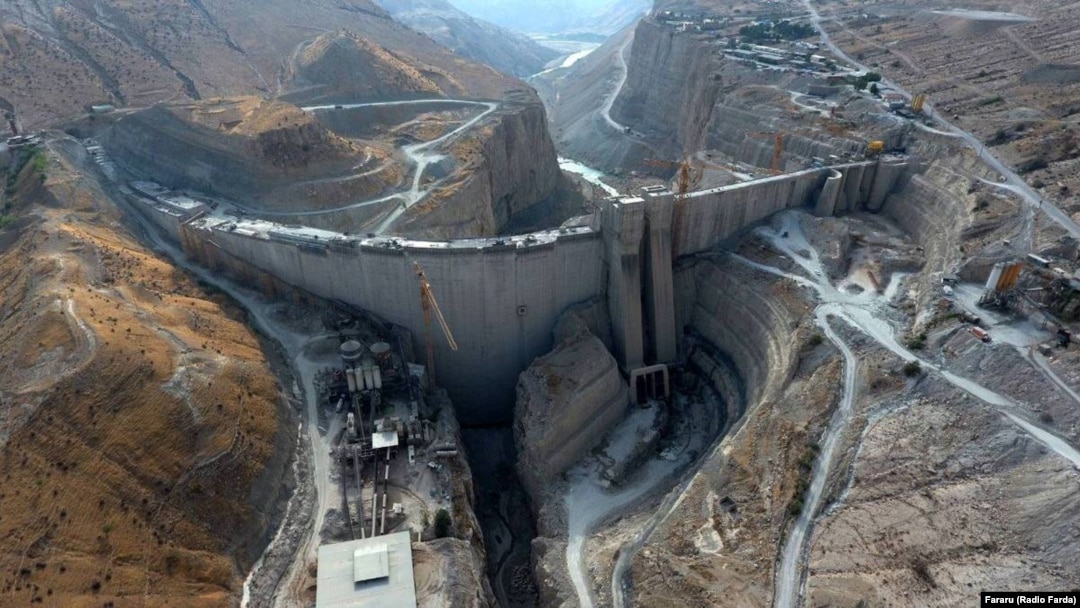As the finishing touches are put on Iran's latest major dam project, environmentalists and archaeologists are warning that it could spell the end for an area in the country's southwest fed by the diminishing waters of the Zohreh River.
The Chamshir Dam, the country's latest massive hydropower venture, is set to go on stream in March. But as the clock winds down, critics are making a desperate bid to stop the project, warning that it will turn agricultural lands into a salty wasteland and flood newly discovered archaeological sites.
The Zohreh River, which will fill the dam's reservoir, is not what it was in the 1960s, when authorities first had designs to harness its power to produce electricity and boost irrigation in impoverished Khuzestan Province and other areas of southwestern Iran.
In recent years, seasonal droughts have at times reduced the brackish waters of the river to a trickle as it winds its way to the Persian Gulf, endangering flood-dependent flora and wildlife and contributing to water shortages that have sparked angry protests in Khuzestan.
The massive dam and adjacent hydroelectric plant, financed through a high-interest, $244 million loan from China, has been erected on the western edge of Kohgiluyeh and Boyer-Ahmad Province, and will cut off downriver Khuzestan from the natural flow of the already stressed Zohreh River to fill its reservoir.
The dam's operator has said that the reservoir will hold 2.3 billion cubic meters of water and generate 482 megawatts of hydroelectric power a year, while the authorities have sold it as a way to quench farmers' thirst for dependable water supplies to boost agricultural output.

Will Chamshir Dam be another grand disaster?
But residents of the region, which sits on an extensive bed of gypsum and salt known as the Gachsaran Formation, do not have to look far to see the destruction wrought by the government's previous failures to manage scarce water supplies despite grand promises.
The Gotvand Dam, constructed in the 1990s and located just 250 kilometers northwest of the Chamshir project, was situated next to a large salt dome. Despite warnings, the project went ahead and ultimately left the authorities dealing with a brine-filled reservoir.
And in 2021, angry protesters who took to the streets of Khuzestan and neighboring Isfahan Province pointed to the Chadegan Dam, located 250 kilometers north of the Chamshir Dam, and other large-scale projects from the 1970s as the source of their water woes.
WATCH: Water shortages in the Iranian province of Isfahan led to mass protests in November 2021 and a brutal government response. Farmers in the province say the situation still has not improved and accuse officials of gross mismanagement.
Your browser doesn’t support HTML5
Months After Water Shortage Protests, Iranians Say Farms 'Turning To Dust'
Flood Of Criticism
Nomads have roamed the area surrounding the Chamshir project since the Sassanid Empire, the last Persian imperial dynasty before the Muslim conquest of the mid-seventh century.
More than 140 ancient sites from the Sassanid and Islamic eras lie in the basin destined to become a reservoir, 124 of them newly discovered. But with precious little time to excavate the sites, archaeologists fear that vital pieces of the country's history will soon be drowned and that modern-day nomads will be forced out.
For their part, environmentalists have strongly objected to the project, saying that aside from salt deposits the reservoir is also set on capped oil wells. They have called for it to be halted immediately until further impact studies can be conducted.
The dam's operators have downplayed the criticism and stressed the importance of pooling precious water supplies. They have also argued that concerns about high salinity are unfounded because salt deposits are buried hundreds of meters below the surface.
Mahmud Muharniya, the dam's manager, said in a December press conference that "there is no evidence of the presence of salt on the surface" and that comparisons to other controversial projects are misguided. Muharniya also said that the reservoir will be filled with waters from the winter flood season, which he said lessens the salinity of the Zohreh River and will provide higher-quality water.
Study In Open Opposition
But those arguments have done little to assuage critics' concerns, as evidenced by videos, petitions, and open letters penned by researchers and environmental authorities.
Hossein Akhani, a prominent botanist who has studied Iran's salt-imbued landscapes for decades, took to Instagram as early as 2021 to show that high salinity had already taken its toll on plant life near the new dam project.
"Your dam was so salty that it was revealed after only two days of visits," Akhani wrote in comments to a video he posted showing dead and damaged trees. "You can continue to trick ignorant officials with false claims, but the truth doesn't hide."
More recently, university professors and environmental experts have pushed back with a petition signed by more than 23,000 people declaring the Chamshir Dam a "danger," due to faults in the reservoir bed and the existence of 11 oil wells in and around the reservoir. The authors of the petition, including Akhani, also said that halting the flow of winter flood waters will disrupt the natural process of desalination and soil fertilization, and will create a dust bowl.
Other academics have listed other negatives, including the disruption of nomadic lifestyles, the dependence on Chinese investment, the loss of trust in the government, and the continuation of a flawed "American" idea of progress that began with large-scale development projects decades before the 1979 Islamic Revolution.
In an interview in late December with the Tehran-based Payam-e Ma newspaper, Mehdi Hajikazem, the civil affairs manager of Chamshir Dam, dismissed the concerns. Hajikazem said that research regarding the project was "open to everyone" and that academics who took his office up on its offer to study it came away convinced that the dam poses no threat.
"It is not my responsibility to decide whether to stop [the project]," Hajikazem said, accusing critics of simply being against the construction of dams under any conditions. "But as a patriotic Iranian, I say that this dam is really necessary."


